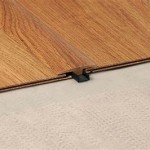Porcelain tile is a popular choice for many home renovation projects. Its durability and attractive appearance make it an ideal material for flooring, countertops, and other applications. However, for porcelain tile to perform as intended, it must be installed with the right thinset. Thinset is a cement-based adhesive that binds the tiles to the substrate and provides an impermeable bond.
When choosing a thinset for porcelain tile, it is important to consider the type of tile being used and the environment in which it will be installed. For example, exterior porcelain tile requires a thinset that is frost-resistant, while interior porcelain tile needs a thinset that is less susceptible to moisture. Additionally, thinset formulated for ceramic tile may not be suitable for porcelain tile.
Before applying thinset, the substrate should be properly prepared. This includes cleaning the substrate of any dust, dirt, or debris, as well as any existing sealers or coatings. After the substrate is prepared, the thinset should be applied in a thin, even layer. The thinset should be allowed to dry for a short period of time before the tile is installed. During the installation, the tile should be firmly pressed into the thinset to ensure a tight bond.
Once the tile is installed and the thinset has dried, it is important to seal the grout lines and joints. This helps to protect the tile from moisture, dirt, and other contaminants. Additionally, a sealant should be applied to the tile itself to ensure that it remains in good condition for years to come.
Choosing the right thinset for porcelain tile is an important step in ensuring that the project lasts for many years. By taking the time to research the right thinset for the job and properly preparing the substrate, you can ensure that your tile installation will look great and remain durable for years to come.










Related Posts








